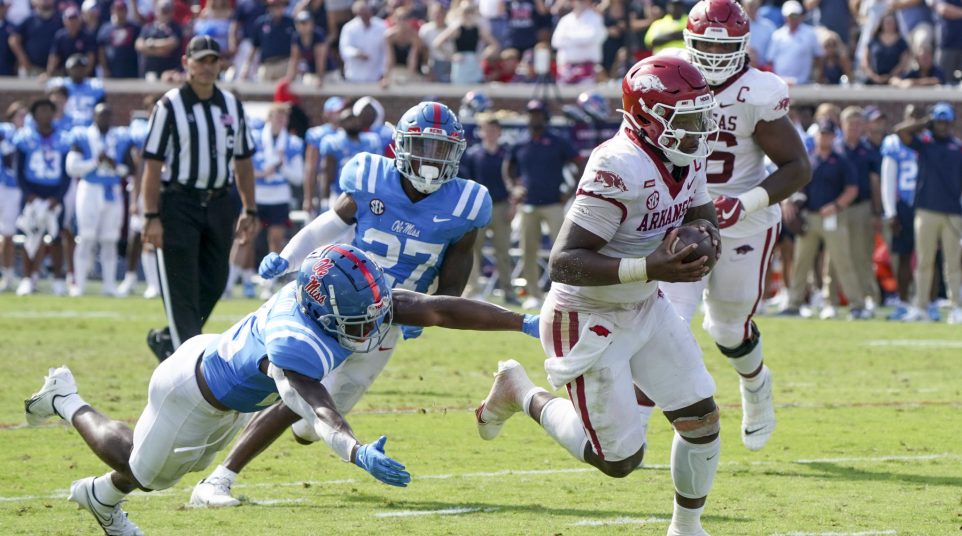
More creativity, risks needed for 3-2-6 defensive scheme to work for Ole Miss
Ole Miss survived a wild one last Saturday in a 52-51 win over Arkansas.
The latest chapter of what has become a wild rivalry resulted in a massive win with potential New Year’s 6 implications. But once the euphoria faded, the conversation turned to the 676 yards of offense Ole Miss allowed, a good chunk of them by quarterback KJ Jefferson, who had never thrown 25 times in a game, yet went 25-for-35 for 326 yards in addition to 85 more on the ground on 20 carries.
Ole Miss’ first 2 SEC games since moving to a 3-2-6 defensive scheme have not gone well, to say the least. Now, context is needed, of course. One could argue Alabama wasn’t a fair fight from a talent standpoint, and the defense was on the field for 95 plays against the Razorbacks. But the fact of the matter is that this scheme, as currently functioning, is not working.
“A lot of first downs, like 37 first downs or something like that, and just not getting off the field, and then with that tempo, guys wear down and guys do not look the same later in the game on defense as they did earlier,” Lane Kiffin said of the performance. “I think that happened on both sides. There are two keys: One is to play more players, but the other, more important one is to get off the field on 3rd and 4th down so that those guys can keep going.”
But can this scheme work when run properly and effectively? The coaching staff seems to think so, and there is reason to believe it could.
Saturday, as rough as it looked at times, was probably more so a product of a lack of depth than schematic deficiencies, though both were undoubtedly factors.
Ole Miss lacks depth across the board defensively and 95 plays is a lot of snaps to handle. It’s probably why Arkansas scored 14 points in the first 38 minutes and 37 in the final 22 minutes. The Rebels simply wore down. That will be fixed in recruiting, and is an urgent issue for this program long-term, but with what this coaching staff is working with now, what can be done?
Ole Miss isn’t pressuring the quarterback with much consistency without blitzing. That’s a killer in a 3-man front. Sam Williams isn’t beating double teams, and the other 2 d-linemen aren’t either, no matter the combination.
Yet Ole Miss isn’t blitzing, seemingly out of fear of its corner play and a combination of other things. The result, to this point, has been that teams are methodically moving the football down the field as the play total increases throughout game. Something has to give. Either the Rebels have to do something different from an alignment and scheme standpoint, or they need to be more aggressive blitzing and taking calculated risks.
Ultimately, what good does it do to worry about a 45-yard gain when the 3 15-yard gains are nearly as likely to happen with what they currently do?
This staff clearly believes this can work, and sees it as more of a tackling issue and guys being out of position.
“We made a change to it, we know it works, we’ve seen it work for us, we’ve seen it work for other people,” Kiffin said. “Arkansas coming in the last week was giving up before us 17 points a game and 270 yards or something. It works when you do it right, we have to get off the field on 3rd down, we have to play more players and we have to tackle. Same as last year we were in a different scheme but if we don’t tackle it don’t matter where people are and that showed up.”
They might be right. But there needs to be more creativity and aggressiveness within the scheme if the results are going to be different.
With a road trip to Tennessee looming, to face an offense similar to Ole Miss’, there’s no time to scrap everything, but I will be interested to see if there is more creativity and more wrinkles added to the base defense the Rebels have seemed content to stick with through five games.
